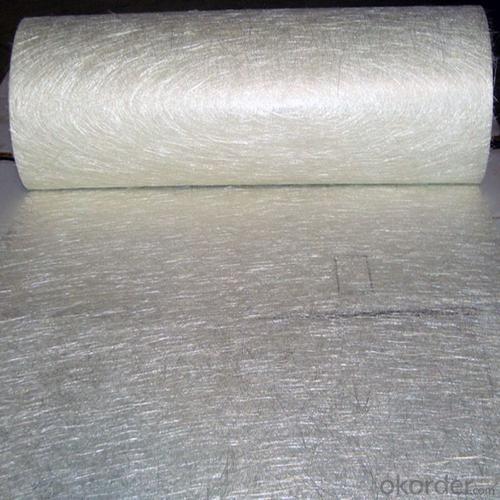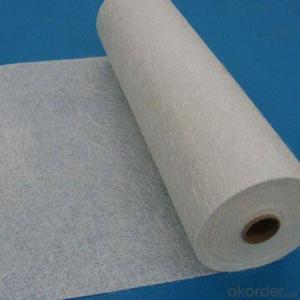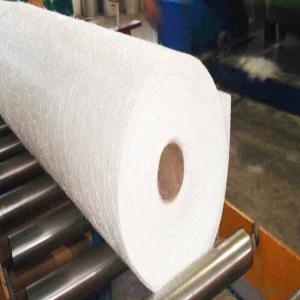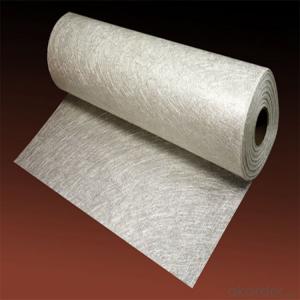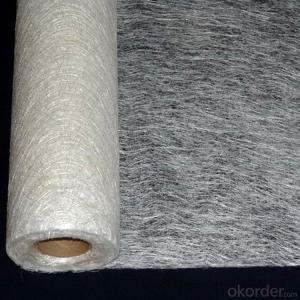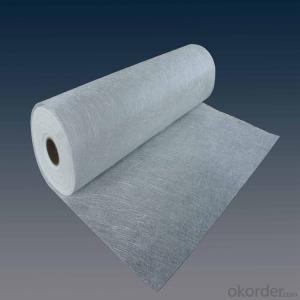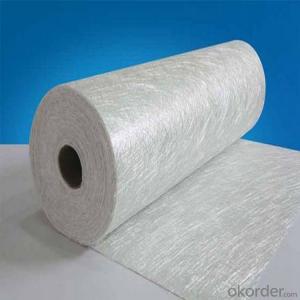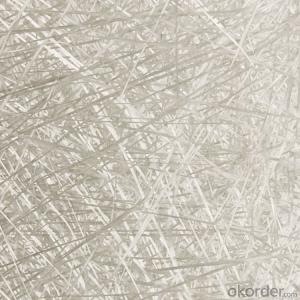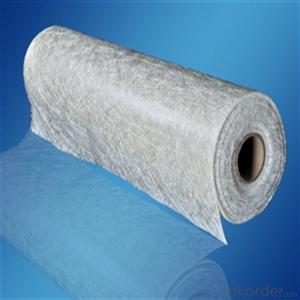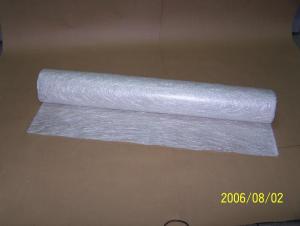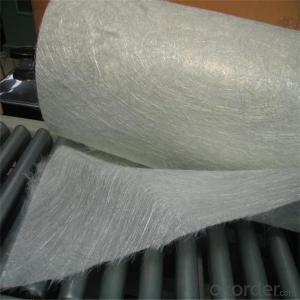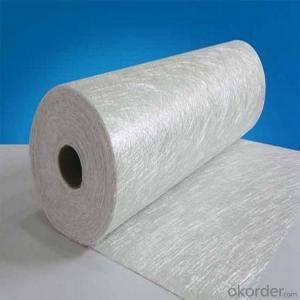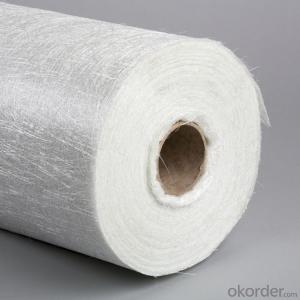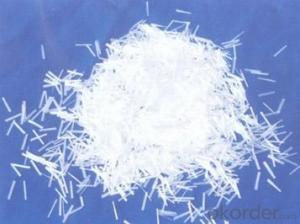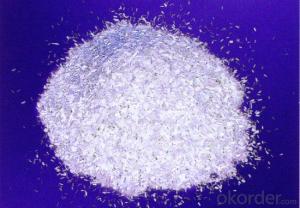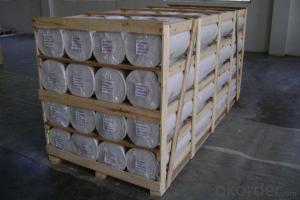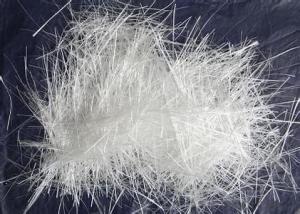Chopped Strand Mat Fiberglass Reinforced Raw Materials
- Loading Port:
- China main port
- Payment Terms:
- TT OR LC
- Min Order Qty:
- 1 kg
- Supply Capability:
- 5000 kg/month
OKorder Service Pledge
OKorder Financial Service
You Might Also Like
Product Description:
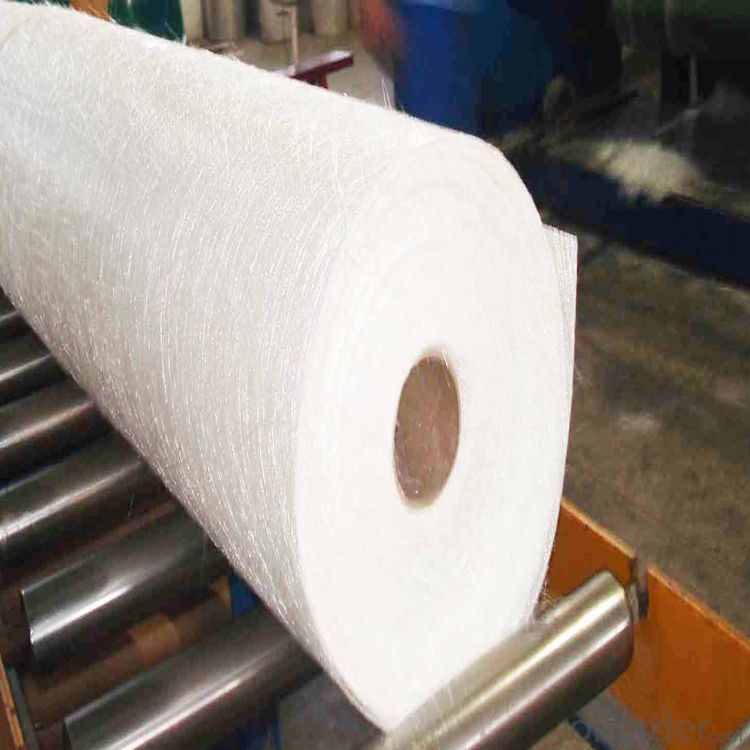
Surfacing Tissue mainly used in the surface layers of FRP products. It features even Fiber distribution, soft feel, level and smooth fiber surface, less glue content, quick resin soak and good pattern fitness. It can improve the product surface property on corrosion resistance, compressive strength, seepage resistance, and longer service life. It is also suitable for spraying; pattern pressing and other FRP pattern technology.
Surfacing Tissue mainly used in the surface layers of FRP products. It features even Fiber distribution, soft feel, level and smooth fiber surface, less glue content, quick resin soak and good pattern fitness. It can improve the product surface property on corrosion resistance, compressive strength, seepage resistance, and longer service life. It is also suitable for spraying; pattern pressing and other FRP pattern technology.
Product Features:
Fast breakdown in styrene
Fiber dispersed evenly
Low binder content
Superior acid corrosion resistance
Specifications:
Item | Over Density | Moisture Content | Chop Density | Polyester Yarn | Width |
(g/m2) | (%) | (g/m2) | (g/m2) | (mm) | |
EMK300 | 309.5 | ≤0.15 | 300 | 9.5 | 50-3300 |
EMK380 | 399 | 380 | 19 | ||
EMK450 | 459.5 | 450 | 9.5 | ||
EMK450 | 469 | 450 | 19 | ||
EMC0020 | 620.9 | 601.9 | 19 | ||
EMC0030 | 909.5 | 900 | 9.5 |
Product Packaging:
Each Surface Tissue is wound onto a paper tube which has an inside diameter of 76mm and the mat roll has a diameter of 330mm. The mat roll is wrapped up with plastic film,and then packed in a cardboard box or wrapped up with kraft paper. The rolls can be vertically or horizontally placed. For transportation, the rolls can be loaded into a cantainer directly or on pallets.
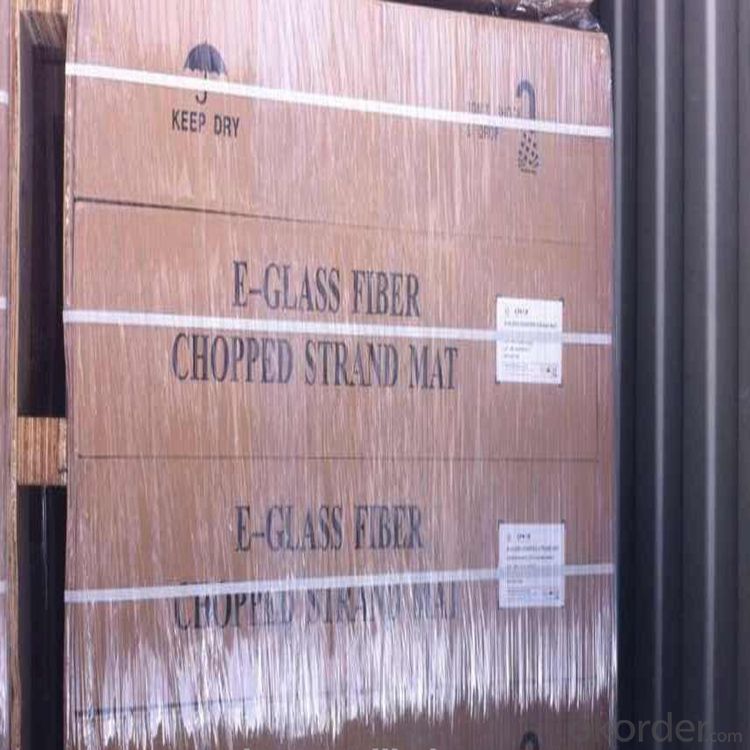
Product Storage:
Unless otherwise specified, Chopped Strand Mat should be stored in a dry, cool and rain-proof area. It is recommended that the room temperature and humidity should be always maintained at 15℃~35℃ and 50%~75% respectively.
Company Information
CNBM (China National Building Material) Group is the largest comprehensive building materials group in China that in integrate scientific research, manufacturing and logistics into one entity. The largest building materials and equipment specialists in China. Upon State Council approval, today CNBM owned more than 300 subordinate manufacturing factories and servicing companies. There are 6 fully owned public listed companies and 11 partially owned with substantial shares public listed companies. In many of these fields, CNBM is playing the leading role in the building industry in the country.
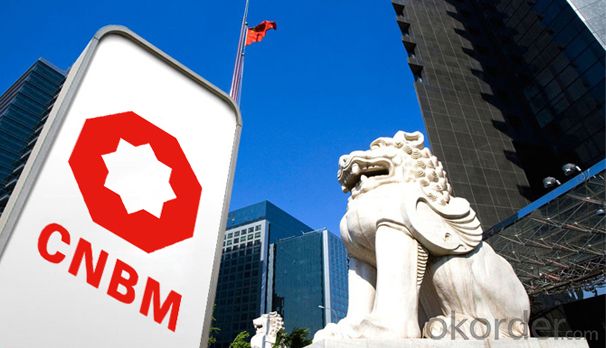
- Q: What are the different types of glass fibers used in chopped strand?
- There are several types of glass fibers used in chopped strand, including E-glass, S-glass, C-glass, AR-glass, and R-glass. Each type has its own unique properties and is suitable for different applications based on factors like strength, chemical resistance, and thermal stability.
- Q: Can fiberglass chopped strand be used in marine applications?
- Fiberglass chopped strand is a viable option for marine applications. This versatile material possesses exceptional corrosion resistance, a favorable ratio of strength to weight, and notable impact resistance, rendering it suitable for marine environments. It is commonly employed in the construction of boats, kayaks, canoes, and other watercraft. By combining chopped strands with resins, a robust composite material is produced, capable of enduring the harsh sea conditions, such as exposure to saltwater, UV rays, and moisture. Furthermore, the ease of handling and ability to mold into various shapes, along with its commendable dimensional stability, contribute to fiberglass chopped strand's practicality. Given its durability and water resistance, this material is an exemplary choice for marine applications.
- Q: Does fiberglass chopped strand improve the wear resistance of composite materials?
- Yes, fiberglass chopped strand does improve the wear resistance of composite materials. Fiberglass chopped strand is made up of small, randomly oriented fibers that are added to the composite matrix. These fibers enhance the overall strength and durability of the composite material, making it more resistant to wear and tear. The high tensile strength and excellent mechanical properties of fiberglass chopped strand help to distribute stress and impact forces more evenly throughout the composite, reducing the likelihood of surface damage and improving its ability to withstand repeated use and abrasion. Additionally, the presence of fiberglass chopped strand can also enhance the stiffness and impact resistance of the composite, further enhancing its wear resistance. Therefore, incorporating fiberglass chopped strand into composite materials is an effective way to improve their wear resistance and extend their lifespan.
- Q: Can fiberglass chopped strand be used in fire-resistant applications?
- Fire-resistant applications can make use of fiberglass chopped strand. Fiberglass is renowned for its exceptional fire-resistant properties and finds wide application in industries that prioritize fire protection. The chopped strand variety of fiberglass exhibits fire-resistant qualities akin to other fiberglass products. It boasts a high melting point and is not prone to catching fire or aiding the spread of flames. Moreover, fiberglass chopped strand can serve as insulation against heat, rendering it fitting for fire-resistant purposes like fire doors, fireproofing materials, and protective clothing.
- Q: How does the surface treatment affect the properties of fiberglass chopped strand?
- The properties of fiberglass chopped strand are significantly influenced by surface treatment. This treatment involves the application of various coatings or finishes to the strands, which can enhance their performance and compatibility with different resin systems. Improved adhesion between the fiberglass strands and the resin matrix is one of the main effects of surface treatment. By modifying the surface chemistry of the strands, the treatment creates a stronger bond with the resin. This enhanced adhesion ensures better mechanical properties of the composite material, including increased tensile strength, flexural strength, and impact resistance. Surface treatment also addresses the issue of moisture absorption in untreated fiberglass strands. Untreated strands have a hydrophilic nature, meaning they easily absorb water molecules. This water absorption can have negative effects on the mechanical properties and dimensional stability of the composite. However, surface treatment can make the strands more hydrophobic, reducing water absorption and preserving the integrity of the composite over time. Moreover, surface treatment improves the dispersibility and flowability of the chopped strands in the resin during the composite manufacturing process. This is particularly crucial for achieving a uniform distribution of the strands within the resin matrix, which ultimately affects the strength and performance of the composite material. Furthermore, surface treatment can influence the thermal stability and resistance to chemical attack of the fiberglass chopped strand. Certain treatments can provide a protective barrier against harsh environments, preventing degradation or corrosion of the composite material. It is important to consider that the specific effects of surface treatment on fiberglass chopped strand may vary depending on the type of treatment used. Different treatments may yield different mechanisms and results, and the choice of treatment should be based on the desired properties and intended application of the composite material.
- Q: Can fiberglass chopped strand be used for reinforcing ceramic materials?
- Yes, fiberglass chopped strand can be used for reinforcing ceramic materials. The high tensile strength and excellent heat resistance of fiberglass make it a suitable reinforcement material for ceramic composites, improving their mechanical properties and durability.
- Q: What is the difference between E-glass and S-glass chopped strands?
- The main difference between E-glass and S-glass chopped strands lies in their composition and properties. E-glass, or electrical glass, is primarily used for its electrical insulation properties and has a lower tensile strength compared to S-glass. On the other hand, S-glass, or structural glass, is known for its exceptional strength and stiffness, making it suitable for applications that require high mechanical performance. Therefore, the choice between E-glass and S-glass chopped strands depends on the specific requirements of the intended use.
- Q: Can fiberglass chopped strand be used in aerospace interior components?
- Yes, fiberglass chopped strand can be used in aerospace interior components. Fiberglass is a lightweight and versatile material that offers excellent strength and durability. It is commonly used in various industries, including aerospace, for its high-performance properties. In aerospace, interior components often require materials that are lightweight yet strong enough to withstand the demanding conditions of flight. Fiberglass chopped strand meets these requirements as it is lightweight and has high tensile strength. It can be used in the manufacturing of interior components such as panels, seat backs, overhead bins, and cabin partitions. Additionally, fiberglass chopped strand offers excellent fire resistance properties, which is crucial for aerospace applications. It can meet the stringent fire safety regulations and requirements set by aviation authorities. Furthermore, fiberglass chopped strand is relatively easy to process, allowing for efficient and cost-effective manufacturing processes. It can be molded into various shapes and sizes, making it suitable for complex aerospace interior designs. Overall, fiberglass chopped strand is a suitable material for aerospace interior components due to its lightweight, high strength, fire resistance, and ease of processing. Its use in the aerospace industry helps to ensure the safety, performance, and comfort of passengers and crew members during flight.
- Q: Can fiberglass chopped strand be used in the production of sporting goods?
- Sporting goods can indeed utilize fiberglass chopped strand in their production. This versatile material offers numerous advantages for manufacturing sporting goods, such as being lightweight, strong, and possessing excellent tensile strength. These qualities make it an ideal choice for applications requiring durability and high performance. When it comes to sporting goods production, fiberglass chopped strand is commonly employed in constructing various components like hockey sticks, tennis rackets, golf clubs, and bicycle frames. Its exceptional strength-to-weight ratio enables the creation of lightweight yet sturdy products, thereby enhancing athletes' performance. Additionally, fiberglass chopped strand's resistance to corrosion proves advantageous for sporting goods exposed to moisture or outdoor elements. Moreover, fiberglass chopped strand can be effortlessly molded into diverse shapes and sizes, facilitating the production of intricate designs and custom-made sporting goods. Its flexibility and ability to bond effectively with different resins make it an excellent material for creating composite structures that are both robust and enduring. Overall, due to its lightweight nature, strength, durability, corrosion resistance, and versatility in manufacturing processes, fiberglass chopped strand is an appropriate material for sporting goods production.
- Q: Is fiberglass chopped strand suitable for renewable energy applications?
- Yes, fiberglass chopped strand is suitable for renewable energy applications. It is a lightweight and strong material that can be used in wind turbine blades, solar panel frames, and other components in renewable energy systems. It has excellent resistance to corrosion and can withstand harsh environmental conditions, making it a reliable choice for renewable energy applications.
Send your message to us
Chopped Strand Mat Fiberglass Reinforced Raw Materials
- Loading Port:
- China main port
- Payment Terms:
- TT OR LC
- Min Order Qty:
- 1 kg
- Supply Capability:
- 5000 kg/month
OKorder Service Pledge
OKorder Financial Service
Similar products
Hot products
Hot Searches
Related keywords



